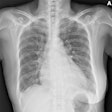Screening with CT, CT angiography, or MRI is not recommended as a general rule for patients who are suspected of having unruptured intracranial aneurysms, according to new guidelines issued by the Stroke Council of the American Heart Association (AHA).
Based on a meta-analysis of nearly 100 studies, the AHA scientific statement was developed by the ten-member council led by Dr. Joshua Bederson, director of cerebrovascular surgery at Mount Sinai Hospital in New York City. The statement appears in the November issue of Stroke and the October issue of Circulation.
"Screening for asymptomatic intracranial aneurysms in the general population is not indicated," they said. "The costs of screening should be weighed against the risks and consequences of subarachnoid hemorrhage." Factors that should be taken into consideration include aneurysm incidence, risk of rupture, and risk of treatment.
They also recommended against screening for people with familial intracranial aneurysm syndrome (FIA), when two relatives have radiographically proven intracranial aneurysms.
"In populations with FIA syndrome, screening programs have demonstrated an increased incidence of intracranial aneurysms. Until the efficacy of screening [these patients] has been evaluated in a clinical study, screening should be considered on an individual basis," they wrote.
However, the document did state that patients who have been treated for aneurysmal subarachnoid hemorrhage (SAH) would benefit from radiological evaluation because the incidence of new aneurysm formation is high (1% to 2%).
In terms of which screening modality to use, the group outlined the pros and cons of four modalities: standard CT, CT angiography (CTA), MRI and MR angiography (MRA) and intra-arterial angiography.
The AHA criticized conventional CT as unable to adequately define the presence or absence of an intracranial aneurysm, and recommended CTA as an effective screening tool in high-risk populations.
The group praised MRI and MRA for their high sensitivity (up to 93%), especially for aneurysms of greater than 5 mm. But "MRA may be less useful in the detection of subtle changes in size," they wrote.
Finally, while intracranial angiography is the gold standard for diagnostic evaluation, it is an expensive, invasive procedure with a risk for complications, they said.
Results from the International Study of Unruptured Intracranial Aneurysms (ISUIA) played a major role in shaping the guidelines. It is the "largest, most systematic natural history study performed to date," Bederson and co-authors wrote. In the study, the researchers retrospectively identified 727 patients with UIAs and followed them for an average of 7.5 years. They reported a rupture rate of less than 0.05% per year in patients with aneurysms less than 10 mm in diameter, and a rupture rate of approximately 1% per annum for those with aneurysms greater than or equal to 10 mm in diameter.
The Stroke Council suggested that treatment for asymptomatic aneurysms smaller than 10 mm should be based on the patient’s age and severity of the disease. Younger patients with a longer life expectancy could benefit more from surgery than older patients who may have comorbid medical conditions, they said.
Between 1% to 5% of the U.S. population may harbor unruptured brain aneurysms, according to the AHA. About 15,000 people have a stroke due to ruptured aneurysms each year.
By Shalmali PalAuntMinnie.com staff writer
November 1, 2000
Reuters Health contributed to this story.
Let AuntMinnie.com know what you think about this story.
Copyright © 2000 AuntMinnie.com



















